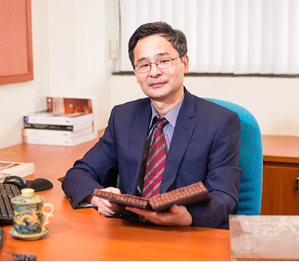讲座嘉宾:Qing-Hua Xu (徐清华), Department of Chemistry, National University of Singapore
讲座主持:霍延平教授
讲座时间:2019年2月25日(周一)上午10:30
讲座地点:工学四号馆202

报告摘要:Two-photon excitation techniques have unique advantages such as 3-dimensional selectivity and deep penetration into biological tissues, compared to their one-photon counterparts. In this talk, I will present our recent work on development of nanocomposite materials with enhanced two-photon excitation properties and their various applications. We used two different strategies to develop composite nanomaterials with enhanced two-photon properties. One method is based on energy transfer from conjugated polymers that have large two-photon absorption cross sections. Conjugated polymers have been utilized to act as two-photon light harvesting materials to develop various schemes for two-photon sensing, imaging and photodynamic therapy, with efficiency improved by over 1000-fold. The second approach is based on plasmon resonance enhancement. Noble metal nanoparticles are known to display interesting phenomenon called Plasmon resonance, which could be utilized to enhance linear and nonlinear optical properties of nearby chromophores (extrinsic) and metal nanoparticles themselves (intrinsic), as well as development of nanocomposite materials with significantly enhanced optical properties. We have developed various plasmon engineered nanocomposites with enhanced two-photon properties, explored their biological applications, and conducted single particle spectroscopy and ultrafast spectroscopy studies to understand their underlying enhancement mechanisms.
报告人简介: XU Qing-Hua (徐清华) received his B.S. from Zhejiang Univ. (1993), M.S. from Peking Univ. (1996) and Univ. of Chicago (1997), and Ph.D. from UC Berkeley (2001). He conducted the postdoctoral research at Stanford Univ. and UC Santa Barbara. He joined NUS Chemistry in 2005 and became an Associate Professor since 2011. His primary research interest is development of various light based applications such as sensing, imaging, photosensitization and optoelectronics using various nanomaterials and organic/polymer materials, as well as investigation of the underlying fundamental mechanisms using various novel optical spectroscopy and imaging techniques. So far he has published >190 peer reviewed articles with citation of >7000 and an H-index of 50.